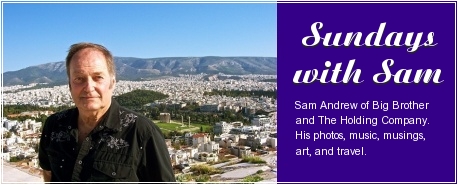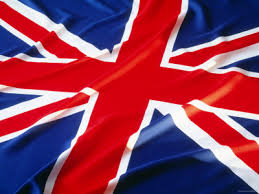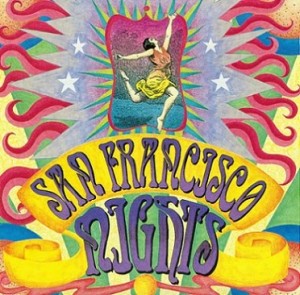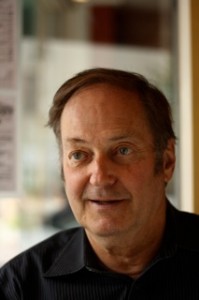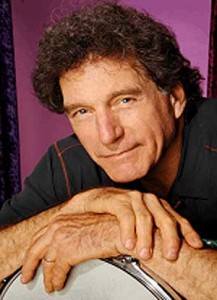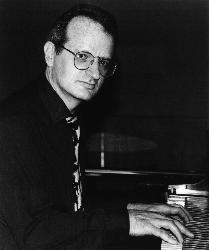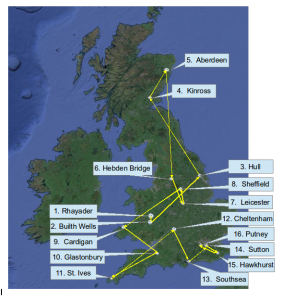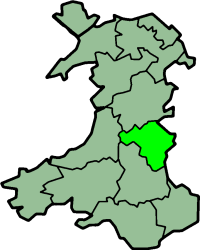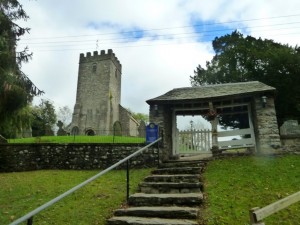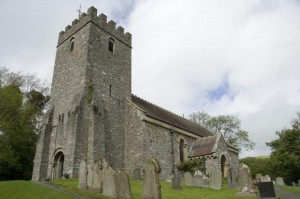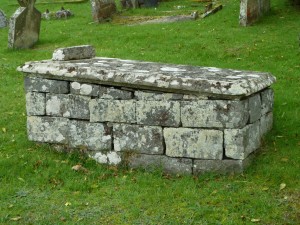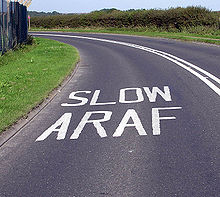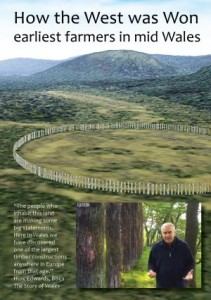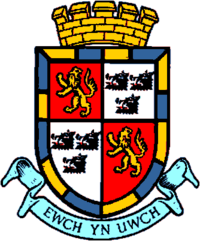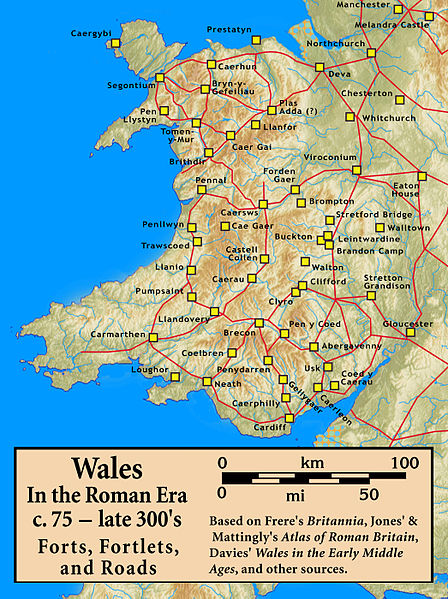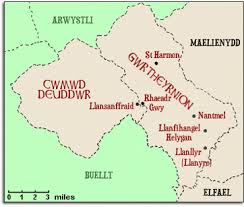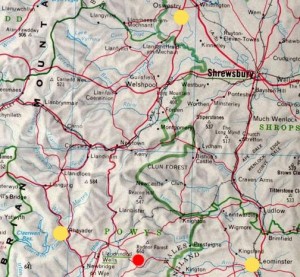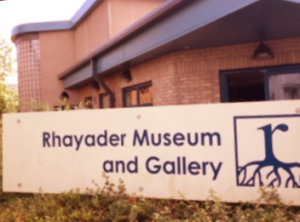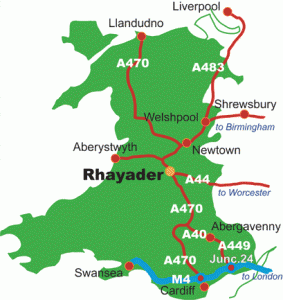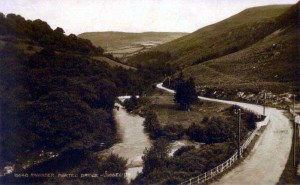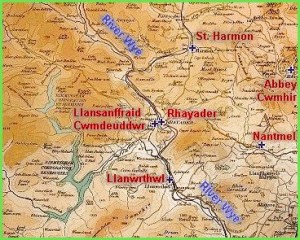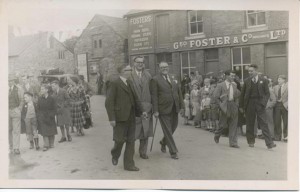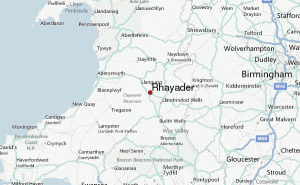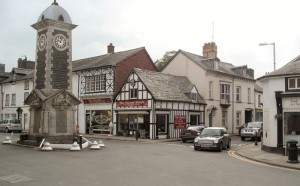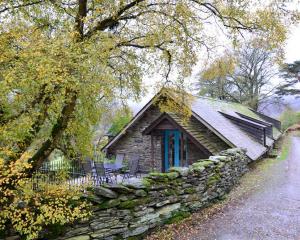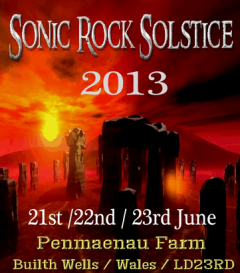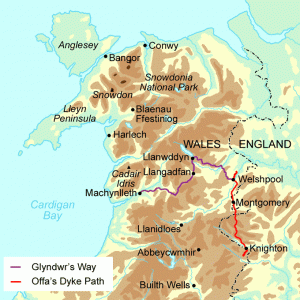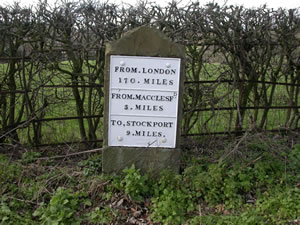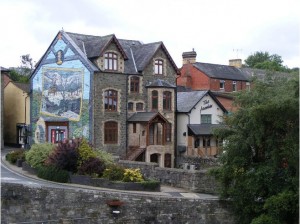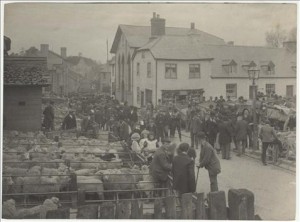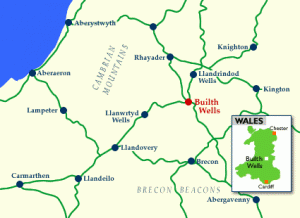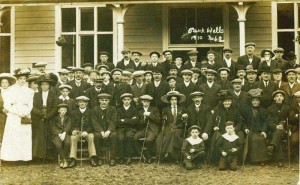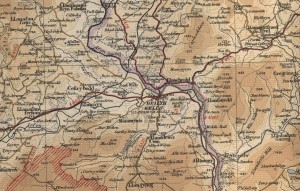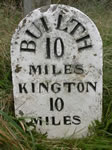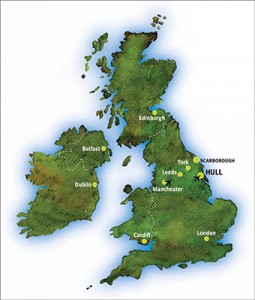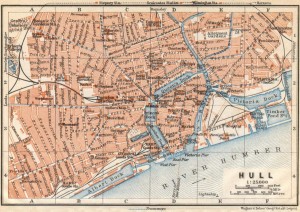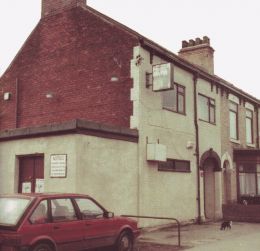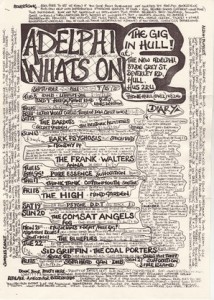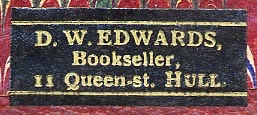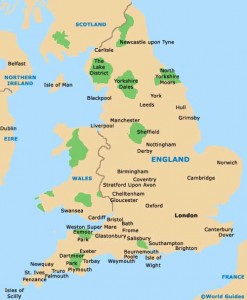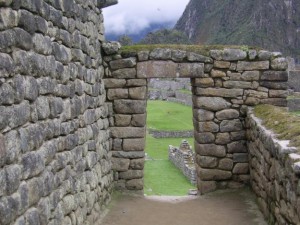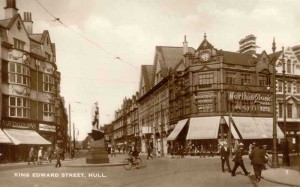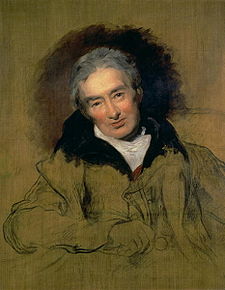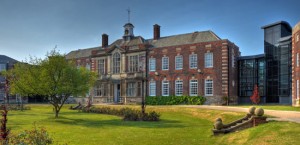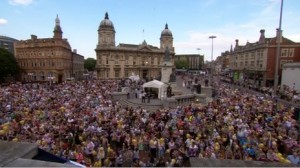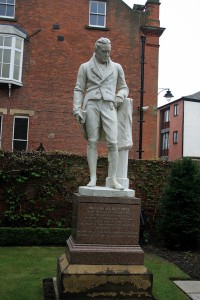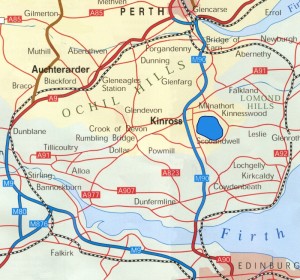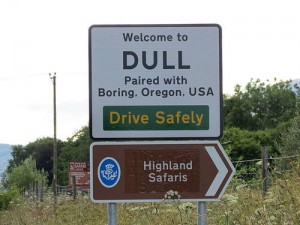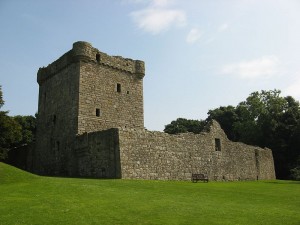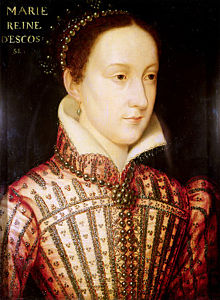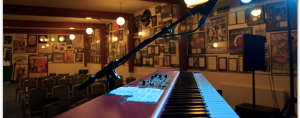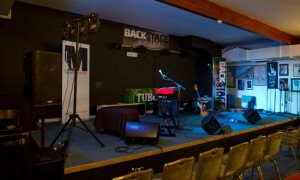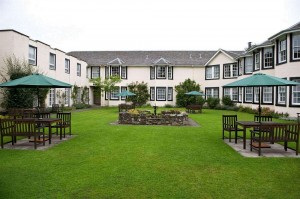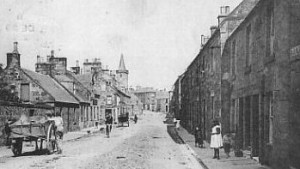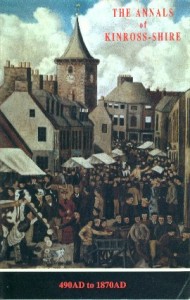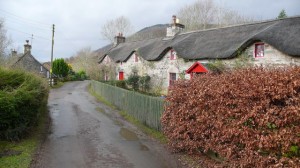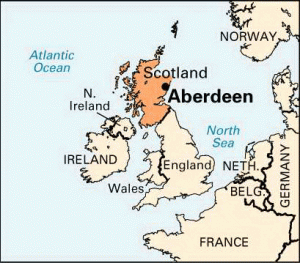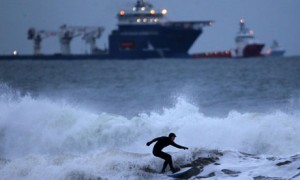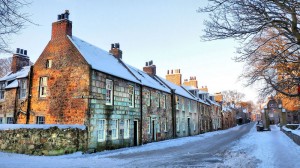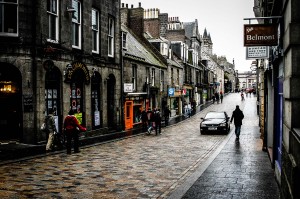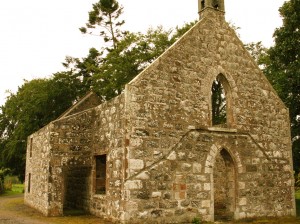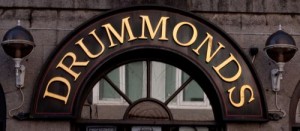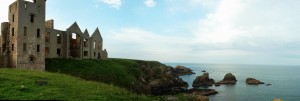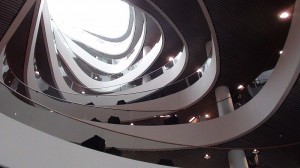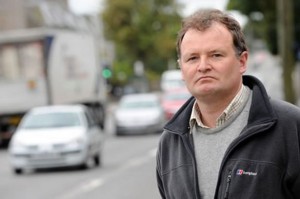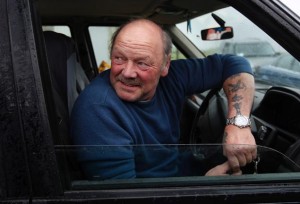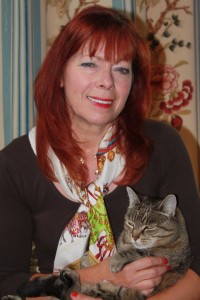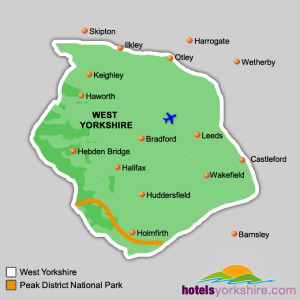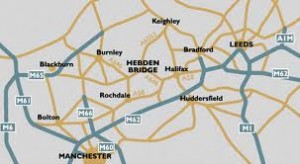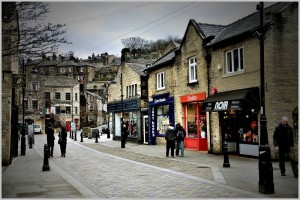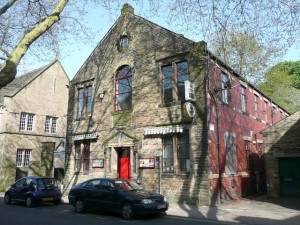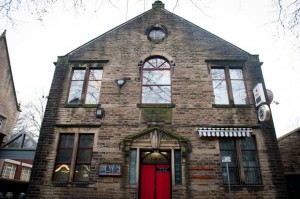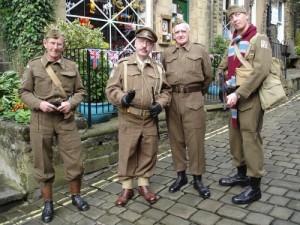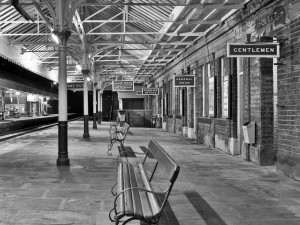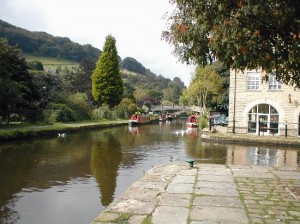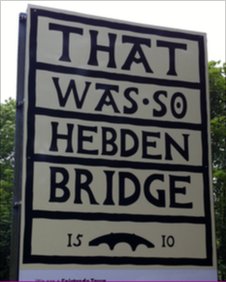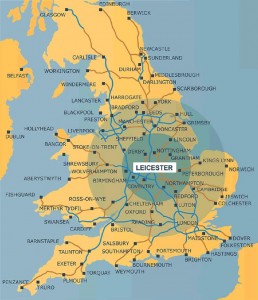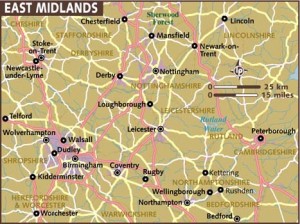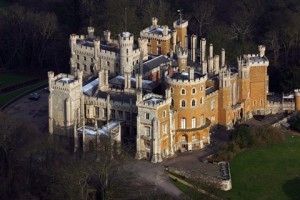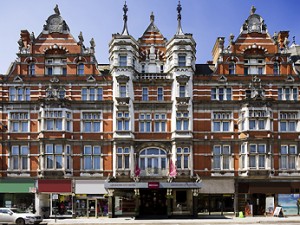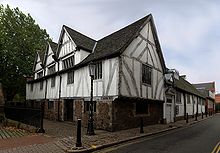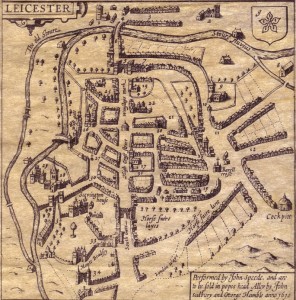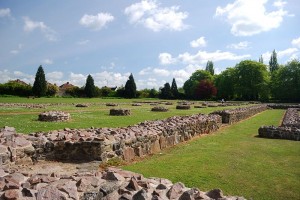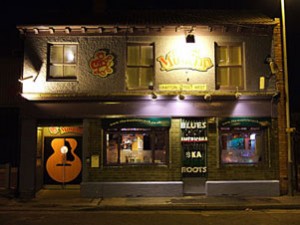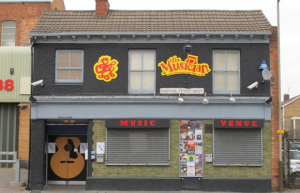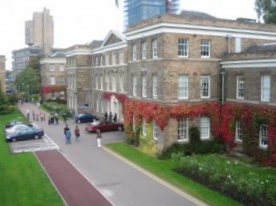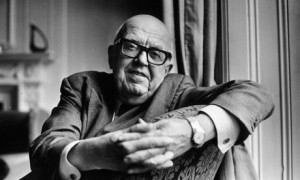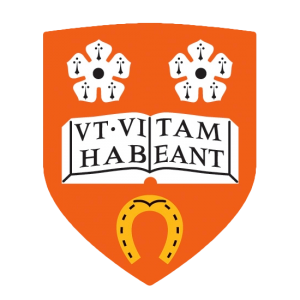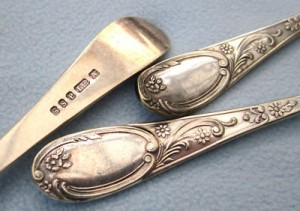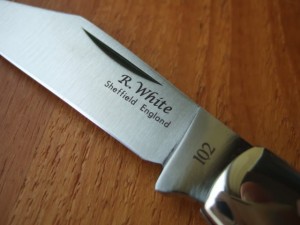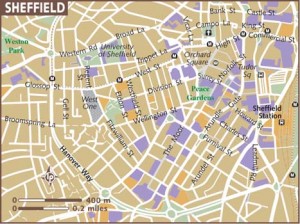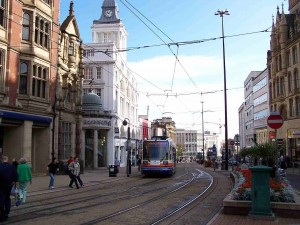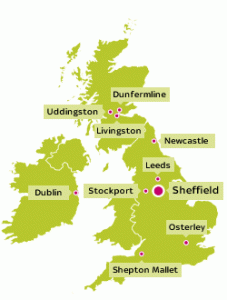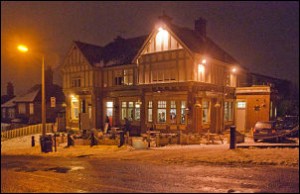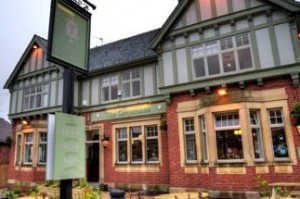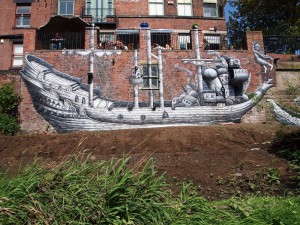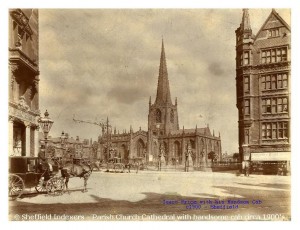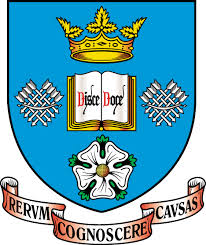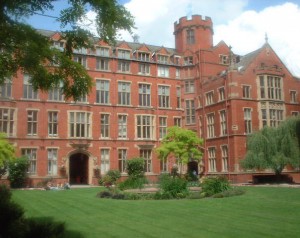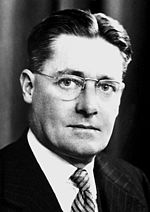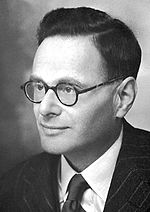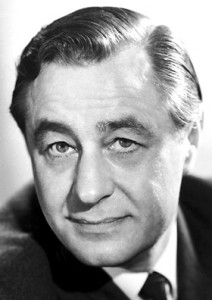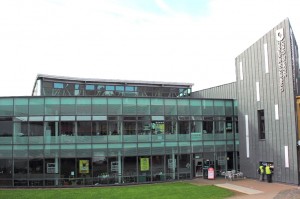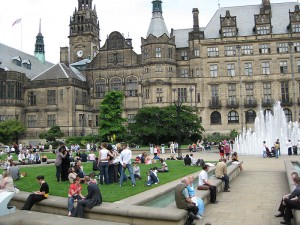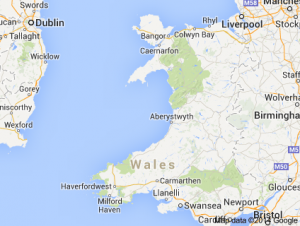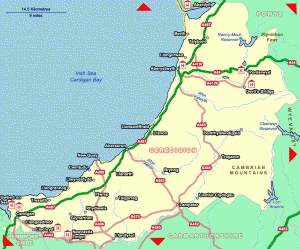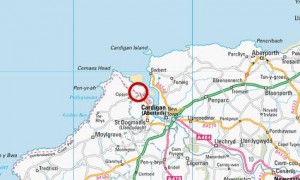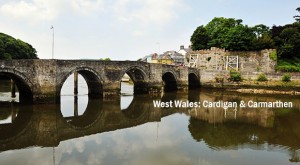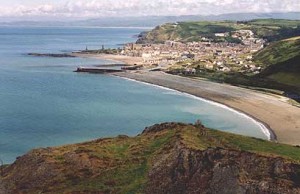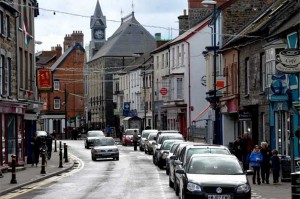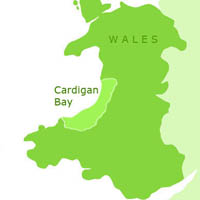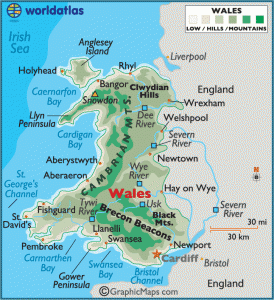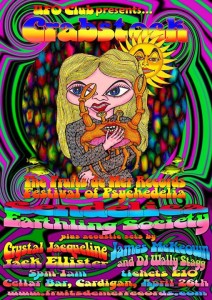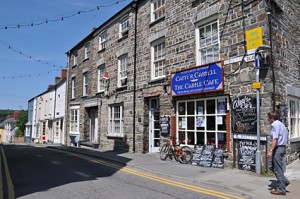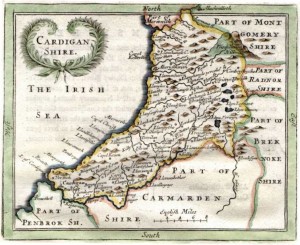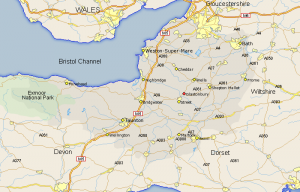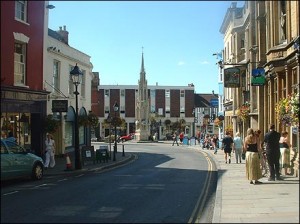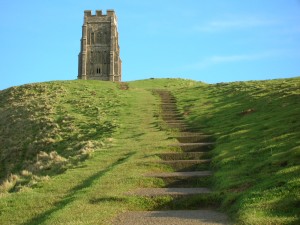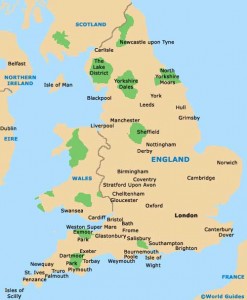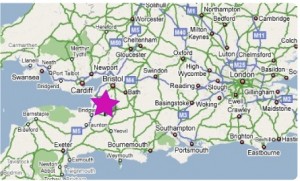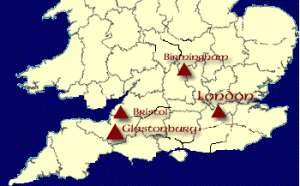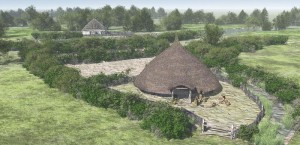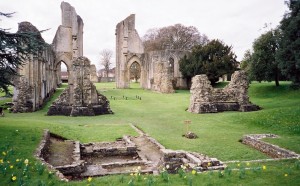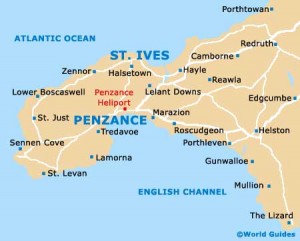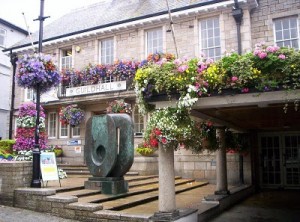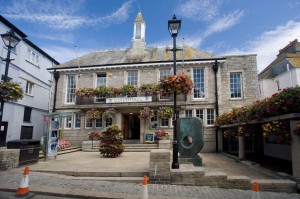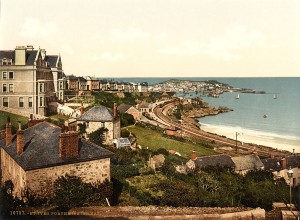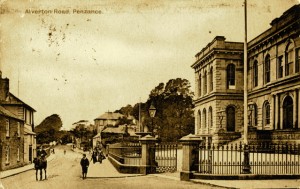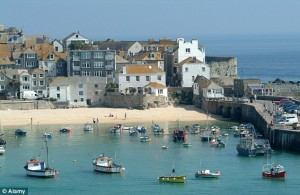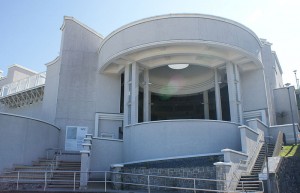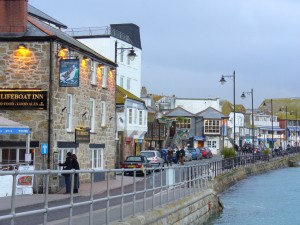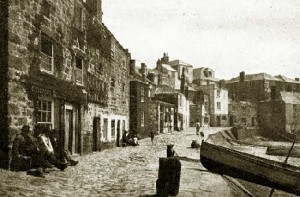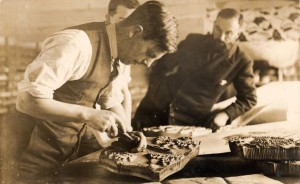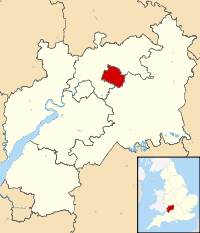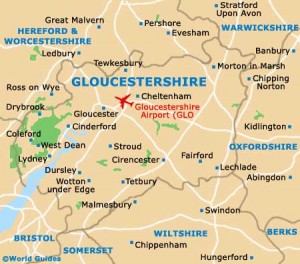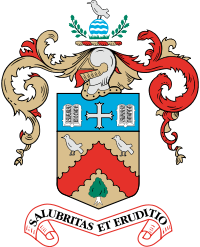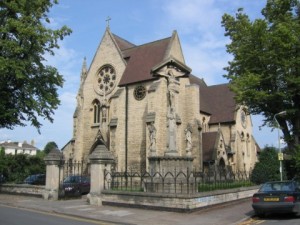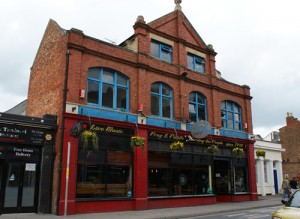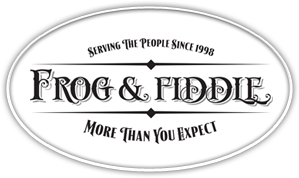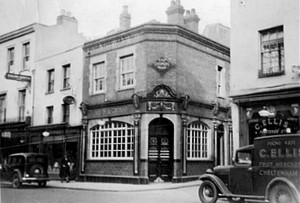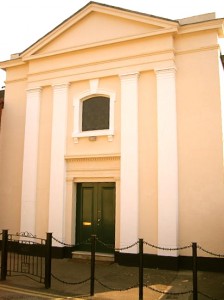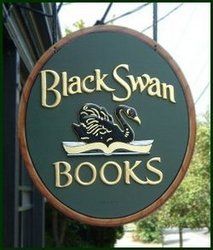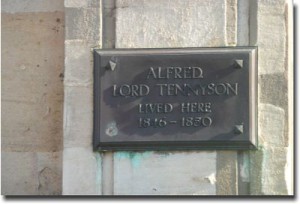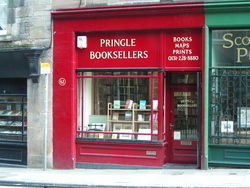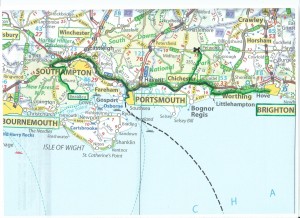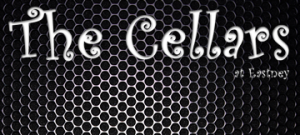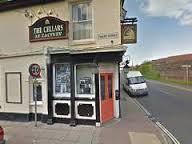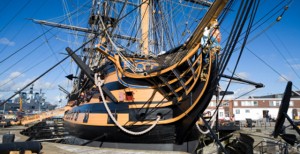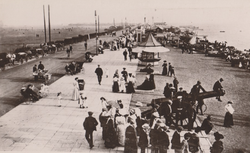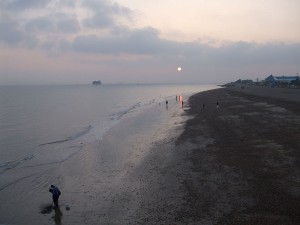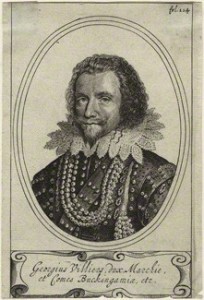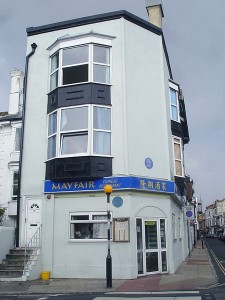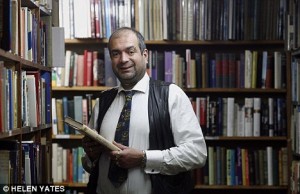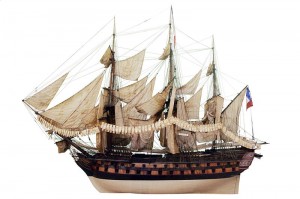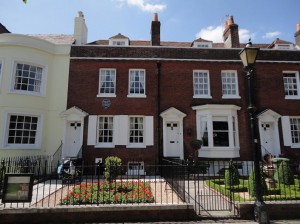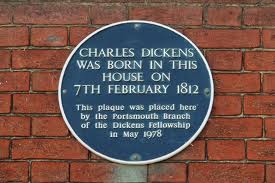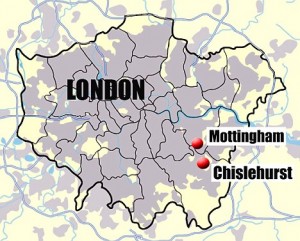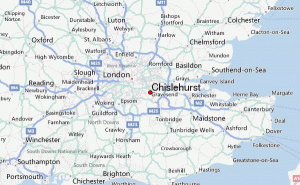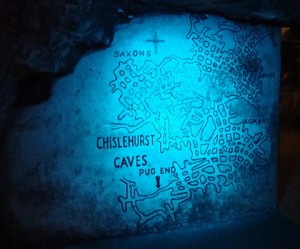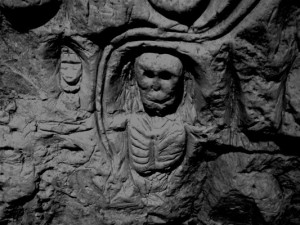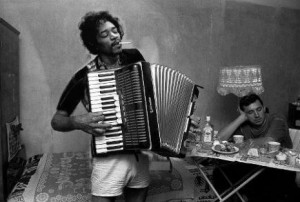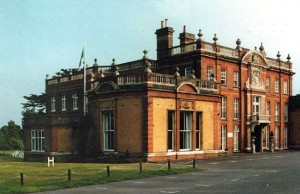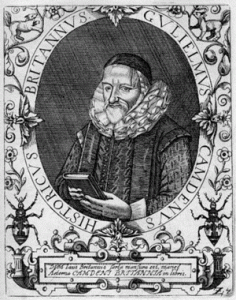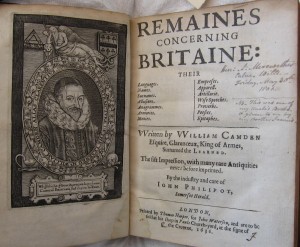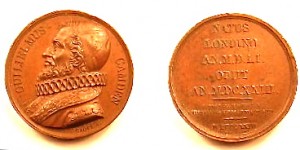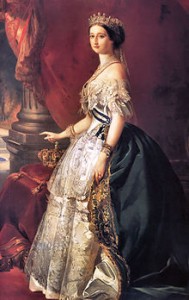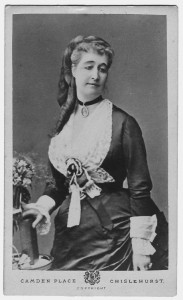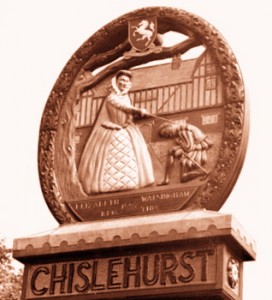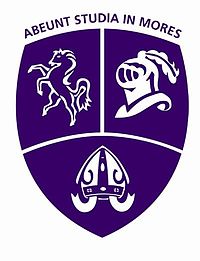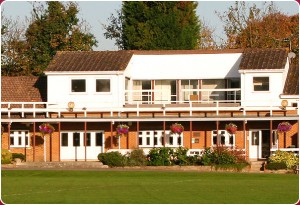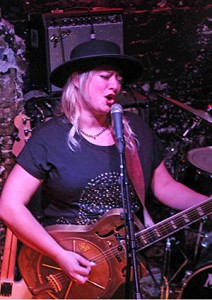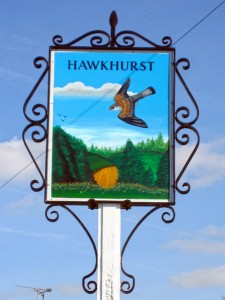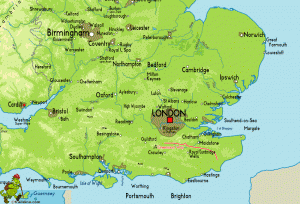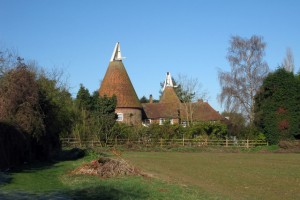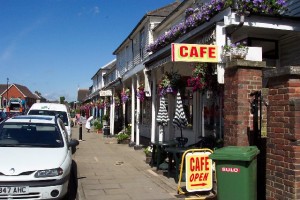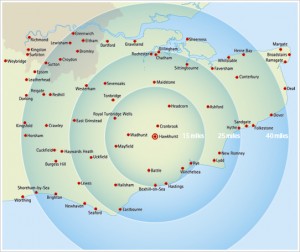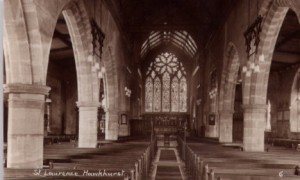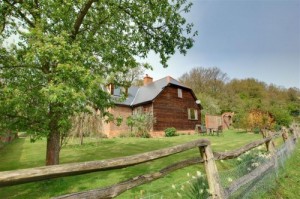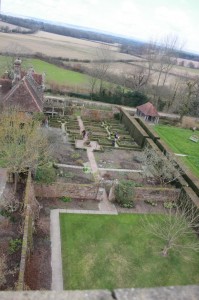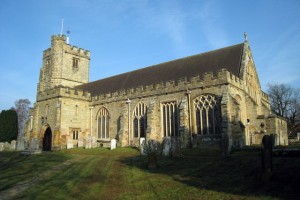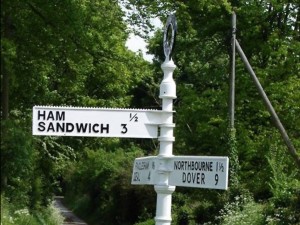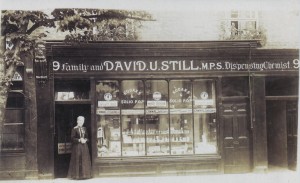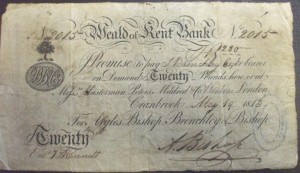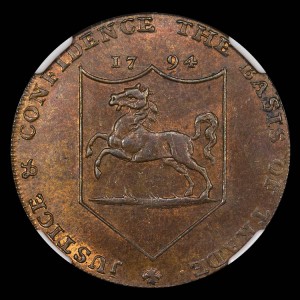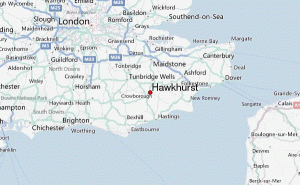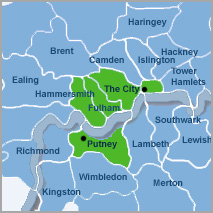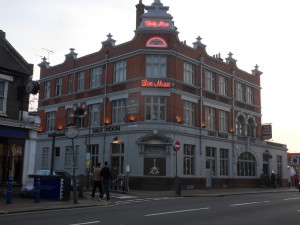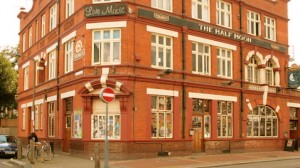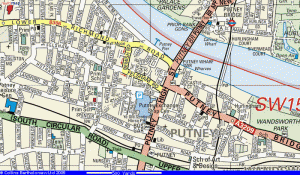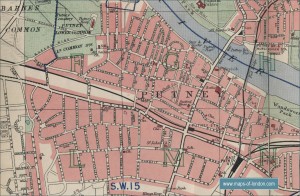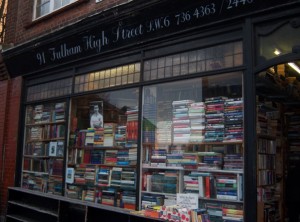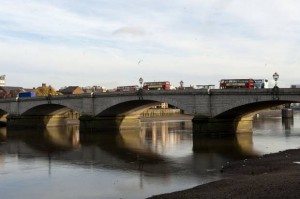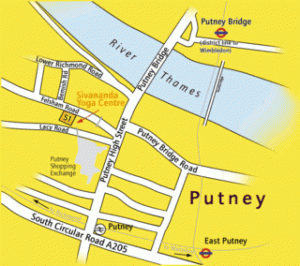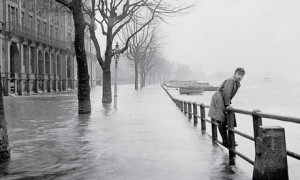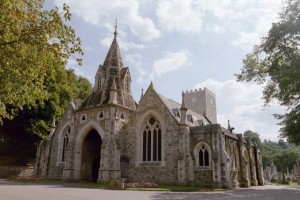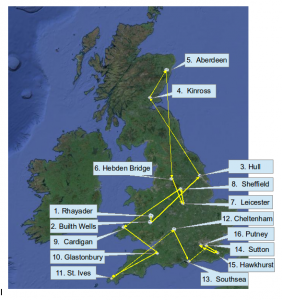San Francisco Nights in the United Kingdom
The San Francisco Nights are:
Sam Andrew
Bruce Barthol
Roy Blumenfeld
David Bennett Cohen
Greg Douglass
Bex Marshall
We’re going to the United Kingdom this summer 2014 to play seventeen engagements.
First, a few days of rehearsal in Nantmel in the middle of Wales. In Nantmel, across the river Wye from the village of Llandwrthwl, is the Living Willow Theatre, an open air theatre constructed of living willow trees.
Nantmel is in Radnor or Radnorshire (Welsh: Sir Faesyfed) one of thirteen historic and former administrative counties of Wales.
People call the Welsh language the British tongue, Cambrian, Cambric or Cymric.
In the thirteenth century, this place was called Nantmayl, Mael’s valley, the place where the river Dulas flows.
Mael was a person and her/his name is also used in the name for Maelienydd in Radnorshire.
The local church is called St Cynllo who is supposed to have founded it in the fifth century CE. Much of the church was rebuilt in 1792.
Poor Radnorsheer, poor Radnorsheer,
Never a park, and never a deer,
Never a squire of five hundred a year,
Save Richard Fowler of Abbey-Cwm-hir
About 15% of the total population in Wales speak, read and write Welsh. At NASA’s Voyager program launched in 1977, the Welsh greeting Iechyd da i chwi yn awr ac yn oesoedd (Good health to you now and forever) was sent into space.
The Welsh Language Measure Act (1993) gave the Welsh language official status in Wales, making it the only language, besides English, that is de jure (by law) official in any part of the United Kingdom.
Neolithic colonists integrated with native people in Wales, gradually changing their lifestyles from a nomadic life of hunting and gathering, to become settled farmers about 6,000 years ago. Welsh emerged in the 6th century from Common Brittonic, the ancestor of Welsh, Breton, Cornish and the extinct language known as Cumbric.
By the time that Julius Caesar landed in Britain (55 BCE), the area of modern Wales had long been divided among the tribes of the Deceangli, Ordovices, Cornovii, Demetae and Silures.
Note that many of these names survived in the nomenclature for geologic periods, because the first minerals and stones representing these eras were found where these ancient tribes lived.
The Romans used their engineering technology in Wales to extract large amounts of gold, copper and lead, as well as modest amounts of some other metals such as zinc and silver.
Our first gig will be in Rhayader (Welsh: Rhaeadr Gwy), the first town on the banks of the River Wye 20 miles (32 km) from its source on the Plynlimon range of the Cambrian Mountains.
We will be playing in the Carad Arts Centre. Rhayader is oldest town in Mid Wales. People have lived here a long time as you can tell by the abundance of cairns and standing stones which were erected here thousands of years ago.
Rhayader is one of the principal centers of population in predominantly rural Radnorshire, and has always been a stopping point for travellers. The Romans had a stop-over camp in the Elan Valley. Monks travelled between the Abbeys of Strata Florida and Abbeycwmhir, and people drove cattle to lucrative markets in the area.
The name Rhayader is a twisting of the Welsh Rhaeadr Gwy, which means Waterfall on the Wye.
In the 1890s the rapidly expanding city of Birmingham, 70 miles east, viewed the nearby Elan Valley as the ideal source of clean, safe water. This was to change the face of Rhayader forever. Thousands of workers became involved in building a massive complex of dams and reservoirs in the area. This complex was officially opened in 1904 by King Edward VII and Queen Alexandra.
Founder members of The San Francisco Nights may be interested to note that Rhayader is famous for being the town with the highest concentration of pubs and drinking establishments, per capita, in the UK with one to each 173 people.
There is that dam that gave the town its name.
Rhayader is situated roughly midway between north and south Wales on the A470, 13 miles north of Builth Wells and 30 miles east of Aberystwyth on the A44. These are two of Wales’ most important trunk roads.
The B4574 mountain road to Aberystwyth is described by the AA as one of the ten most scenic drives in the world.
Goodbye to Rhayader. Hwyl fawr. Da bo ti.
So we travel the thirteen miles south to Builth Wells where The San Francisco Nights are to play at the 2014 Sonic Rock Solstice. Schwmae?
Where the rivers Wye and Irfon run together, there is Builth Wells (Welsh: Llanfair ym Muallt) in the county of Powys with a population of 2,352. The site of the town oversees an important ford across the Wye and the crossing point of the main north-south route in Wales and an important south-west-east route.
The Welsh name Llanfair-ym-Muallt means St Mary’s Church in Buallt. The name of the Cantref, and later the town, came from the Welsh words Bu and Allt, and could be translated as The Wild Ox of the Wooded Slope.
Builth Wells was laid out as two streets connecting a castle and a church and was protected by a hedge rather than a wall. This type of town is sometimes called a Bastide, a kind of medieval market settlement. In San Francisco where the Nights come from, the Spanish laid out the Presidio and the Mission, which was their version of a castle and church, so this town plan is familiar to us.
Builth Castle was built under King Edward I. It replaced an earlier castle built by the Marcher Baron Philip De Braose who claimed the area as a Marcher lordship. Marcher lords were substantially independent of the King of England and the Prince of Gwynedd. Such titles as marquess, marquis, marchese, marqués were given to these men who guarded the marches, that is, the lands at the edge of a country.
On a building in Builth Wells there is a 1000 feet square mural (approx 35 feet high by 30 feet wide) depicting the final days of Llywelyn ap Gruffydd, the last native Prince of Wales. The mural shows Llywelyn and his men, a scene depicting battles and a representation of Builth Castle, where Llywelyn was turned away when trying to flee from the English.
The Hereford cattle breed, named after Hereford market where it was most prominently sold was the main breed of the Welsh borders.
Some people say that when the Bubonic plague ravaged Builth, the people living in the countryside surrounding the town left food and provisions for the townspeople on the banks of a brook about a mile west of the town.
The Builth Wells town people then threw money to pay for the goods into the brook so that the metal coins would be washed free of contamination from the plague.
Thus, this brook became known as Nant Yr Arian or Money Brook, a name which remains today.
Ffarwell Builth Wells, we are now going to drive across England to Hull.
Hull is in the East Riding of Yorkshire, and is on the River Hull at its junction with the Humber estuary, 25 miles (40 km) inland from the North Sea.
The town of Hull was founded late in the 12th century. The monks of Meaux Abbey needed a port where the wool from their estates could be exported. They chose a place at the junction of the rivers Hull and Humber to build a quay.
We are going to play at The New Adelphi, which Paul Jackson, the Adelphi’s owner, says is the most famous (sometimes infamous) place in Hull, and it is an international music venue of substantial repute.
The New Adelphi, notes Mr Jackson, is also a safe, and pretty much trouble free environment. You ever notice that when you hear a sentence like this, you tend to think the opposite is the case? But Paul Jackson seems sincere, so I am going to take him at his word.
The Adelphi was an English literary journal published between 1923 and 1955. Between August 1927 and September 1930 it was renamed the New Adelphi and issued quarterly. The magazine included one or two stories per issue with contributions by Katherine Mansfield, D.H. Lawrence, H.E. Bates, Rhys Davies and Dylan Thomas. The Adelphi published George Orwell’s The Spike in 1931 and Orwell contributed regularly thereafter, particularly as a reviewer.
Hull was originally called Wyke on Hull. Renamed Kings town upon Hull by King Edward I in 1299, the town and city of Hull has served as market town, military supply port, trading hub, fishing and whaling center, and industrial metropolis.
After suffering heavy damage during the Second World War Hull Blitz, the town weathered a period of social deprivation, education and policing, but has made a strong rebound in recent years.
A true hero of humanity was born in Hull, William Wilberforce, who became one of the leading English abolitionists.
Rev. Wilberforce headed the parliamentary campaign against the British slave trade for twenty-six years until the passage of the Slave Trade Act of 1807.
From its medieval beginnings, Hull’s main trading links were with Scotland and northern Europe. Scandinavia, the Baltic and the Low Countries were all key trading areas for Hull’s merchants.
In addition, there was trade with France, Spain and Portugal. Hull’s trading links ultimately extended throughout the world. Docks were opened to serve trade with Australia, New Zealand and South America. Hull was also the center of a thriving inland and coastal trading network, serving the whole of the United Kingdom.
Goodbye, Hull, we’re off to Scotland.
We head north to Edinburgh, cross over the Firth of Forth, and drive up M90 to Kinross, which reminds me of motoring to Glenfarg a few years ago where we played at the Bein Inn, a lovely place. This part of Scotland reminds me of northern California.
Kinross (Gaelic: Ceann Rois) is a burgh in Perth and Kinross, Scotland. It was originally the county town of Kinross-shire.
Kinross is on the shores of Loch Leven, and there are boat trips around the loch and to Loch Leven Castle, where Mary Queen of Scots was famously held prisoner in 1567.
To help Queen Mary escape, Willie Douglas stole the keys and let Mary, dressed as a servant, out of the castle. She was rowed across the lake to where George Douglas and others awaited her, and they fled to Niddry Castle in Lothian.
We’re playing at The Back Room in the Green Hotel. There are roughly 4000-5000 people living in Kinross, and I expect to see every one of them at the gig.
Edinburgh, Glasgow, Stirling, Perth and St Andrews are all within an hour’s drive of Kinross.
The Green Hotel
Kinross is about 370 feet above sea level and the town lies at the western end of Loch Leven, the largest loch in the Scottish Lowlands.
Alexander III (medieval Gaelic: Alaxandair mac Alaxandair; modern Gaelic: Alasdair mac Alasdair) had much of his administration at Kinross.
North to Aberdeen!
This is as far north as I have been in the United Kingdom. Discovery of oil in the North Sea has brought a lot of money into Aberdeen, just as it has made nearby Norway a new European power.
How an Aberdeen surfer might react to this last statement: It’s a’ a loada shite. It’ll a’ be tae dae wi’ the oil money an’ a’ they big-piyin’ joabs. But this city is a lot mair than a’ that pish.”
Aberdeen (Scots: Aiberdeen Scottish Gaelic: Obar Dheathain) is Scotland’s third most populous city. King David (1124-1153 bestowed Royal Burgh status on Aberdeen which transformed the city.
The area around Aberdeen has been settled since at least 8,000 years ago, when prehistoric villages lay around the mouths of the rivers Dee and Don.
The city began as two separate burghs: old Aberdeen at the mouth of the river Don, and New Aberdeen, a fishing and trading settlement, where the Denburn waterway entered the river Dee estuary.
Here is where we will play: Café Drummond, the bastion of the Aberdeen alternative music scene.
In the daytime, this is a quiet, mellow public house, but it becomes a rock and roll venue at night.
In the previous two centuries, builders in Aberdeen used locally quarried gray granite which has a lot of mica in it, so that it sparkles. Thus, Aberdeen has been styled the Silver City with the Golden Sands.
George Gordon, Lord Byron, lived in Aberdeen when he was a boy.
I am excited to see the Sir Duncan Rice library which reminds me of the Guggenheim. Sir Duncan Rice himself has published widely as a professional historian, and has received honorary degrees from New York University and the Robert Gordon University in Aberdeen as well as fellowships at Harvard and Yale and the Royal Society of Edinburgh.
Aberdeen gets fewer than seven hours of daylight in winter, but nearly 18 hours at its peak in the summer.
Aye, mebbee, but ya wouldnae wan ti live there!
I don’t understand why the English call the Scots tightwads? From personal experience the south-east English are the tightest feckers about.
I would sell now and move dooon sooth to Edinburgh or somewhere where your property will hold its value.
Awe happiness, dinnae go! As we say in Rubislaw Den, may your lum aye reek, wi some ither c_nts coal.
I’m a local Aberdeen lass, I’ve always had a love-hate relationship with the place, but I think a lot of people have that with their home city.
South to Hebden Bridge: The original settlement was the hilltop village of Heptonstall.
Hebden Bridge (originally Heptenbryge) started as a settlement where the Halifax to Burnley packhorse route dropped into the valley and crossed the River Hebden at the spot where the old bridge (from which Hebden Bridge gets its name) stands.
Hebden comes from the Anglo-Saxon Heopa Denu, ‘Bramble (or possibly Wild Rose) Valley’.
We are playing at the Trades Club, an old fashioned working mens club with an intimate spit and sawdust style room for bands which holds about 200 people so its a very atmospheric venue.
They have great music, great beer, and lovely staff. And its cheap. You cannot beat the locals dancing en masse to music they like.
Hebden was known as “Trouser Town” because of the large amount of clothing manufacturing.
The steep hills and access to major wool markets meant that Hebden Bridge was ideal for water-powered weaving mills and so the town developed during the 19th and 20th centuries.
Drainage of the marshland, which covered much of the Upper Calder Valley before the Industrial Revolution, enabled construction of the road which runs through the valley. Prior to this, travel was only possible via the ancient packhorse route which ran along the hilltop, dropping into the valleys wherever necessary.
During the Second World War, Hebden Bridge was designated a “reception area” and took in evacuees from industrial cities. Two bombs fell on Calderdale during the war, but they were not targeted, they were merely the emptying of a bomb load, so let’s be thankful for that.
Good’un. In a bit. Tarra.
Leicester was once an army camp.
Any town name in England that ends in -caster, -cester is derived from castrum, Latin for castle, camp, fortress. Lancaster, Rochester, , Winchester, Worcester, Chester, Chesterfield, Cheshire, Doncaster, Newcastle (castle from castellum, little camp), all were once armed camps.
Ligore castrum = camp on the Legro river = Leicester
Leicester is one of the oldest cities in England, it was the center of a bishopric from around 670, endowing it with city status.
By the middle ages, Leicester had become a town of considerable importance and mentioned in the Domesday Book as a civitas, city.
On 4 November 1530, Cardinal Thomas Wolsey was arrested for treason on orders of Henry VIII. On his way south to face dubious justice at the Tower of London, Wolsey fell ill. The group escorting him was concerned enough to stop at Leicester.
There, Wolsey’s condition quickly worsened and he died on 29 November 1530 and was buried at Leicester Abbey, now Abbey Park.
We are playing in Leicester at The Musician, which is near the city center. There are many pubs in the area we thought we might want to check out later. Some of these leicester square bars like the Lost Alhambra came highly recommended by locals there.
The Musician is on a quiet back street in the middle of Leicester in the middle of England.
The University of Leicester has established itself as a leading research-led university and has consistently ranked among the top fifteen universities in the United Kingdom.
A man I greatly admire, C.P. Snow, was educated at the University of Leicester, where he read chemistry for two years and proceeded to a master’s degree in physics. From Leicester, Snow went on a scholarship to Cambridge and gained his PhD in physics (Spectroscopy). In 1930 he became a Fellow of Christ’s College. C.P. Snow writes literature and science with equal ease. His books are highly recommended.
That they may have life: motto of the University of Leicester.
Now we’ll take the fork in the road with John Spoons and drive to Sheffield.
The last time I was here I made some cutting remarks about how we were going to make a stab at playing Mack The Knife. I thought that the Sheffielders would throw daggers at me for such sharp repartee, but they actually laughed, probably out of kindness to their dull yankee guest. Of course they were probably laughing at me, rather than with me, but that’s all right.
Sheffield is in south Yorkshire and is part of the West Riding of Yorkshire. Its name derives from the River Sheaf, which runs through the city.
Sheffield’s population is 551,800 and it is one of the eight largest regional English cities that make up the Core Cities Group. Sheffield is the third largest English district by population.
Sheffield is located within the valleys of the River Don and its four tributaries, the Loxley, the Porter Brook, the Rivelin and the Sheaf.
Sheffield has the highest ratio of trees to people of any city in Europe. At first blush, you may not find this a significant fact, but I remember when I first flew over Paris, the dominant impression I had was how many trees there were along the boulevards, and it gave me a good feeling about the city before we even landed. Trees and books are civilizing influences.
We are to perform here at The Greystones, which is the principal pub for the Thornbridge Brewery.
There’s a lot going on at The Greystones, jewellery workshops, morris dancing, dog shows, psychic nights, and life drawing classes. I would love to sit in on a life drawing class or two.
Sheffield has been inhabited since at least the late upper Paleolithic period, about 12,800 years ago. The earliest evidence of human occupation in the Sheffield area was found at Creswell Crags to the east of the city. The Brigantes, whom I remember from Roman readings, are thought to have constructed several hill forts in and around Sheffield
After the Romans left, the Sheffield area may have become the southern part of the celtic kingdom of Elmet, with the rivers Sheaf and Don forming part of the boundary between this kingdom and the kingdom of Mercia.
This is the coat of arms for the University of Sheffield: To know the causes of things.
The University of Sheffield is a research institution. It received its Royal Charter in 1905 as successor to Sheffield Medical School (1828) and University College of Sheffield (1897). As one of the original red brick universities, it is also a member of the prestigious Russell Group of research intensive centers of learning.
This is Firth Court at the school. Hilary Mantel attended the University of Sheffield as did Eddie Izzard, and we all know what a genius he is.
Five Nobel Laureates have been associated with the University of Sheffield, among them Howard Florey who won the Nobel in 1945 for his work on penicillin.
The 1953 Nobel Prize in Physiology or Medicine went to Hans Adolf Krebs for the discovery of the citric acid cycle in cellular respiration.
From the Chemistry department at the University of Sheffield, George Porter was awarded the Nobel in 1967 for work on extremely fast chemical reactions (Flash photolysis).
The University of Sheffield Students’ Union has been rated as the best in the UK for the last five years (2009-2013). It consists of two bars (Bar One – which has a book-able function room with its own bar, The Raynor Lounge – and The Interval); three club venues (Fusion, Foundry and Studio); and coffee shops, restaurants, shops, and the student run cinema Film Unit. There is also a student radio station called Forge Radio and a newspaper called Forge Press, which are run under the umbrella of Forge Media.
Goodbye to Sheffield. We are returning to beautiful Wales.
Cardigan Bay (Welsh: Bae Ceredigion) is an inlet of the Irish Sea, indenting the west coast of Wales between Bardsey Island, Gwynedd in the north, and Strumble Head, Pembrokeshire at its southern end. It is the largest bay in Wales.
From the Ceredigion Coast path it is often possible to observe Bottlenose Dolphins, porpoises and Atlantic Grey Seals. The Bay has the largest population of bottlenose dolphins in the UK
Up until the early 20th century, Cardigan Bay supported a strong maritime industry.
Cardigan is located at the mouth of the River Teifi, hence the Welsh name, Aberteifi (Mouth of the Teifi), and at the turn of the 19th century, the heyday of the port, it was a more important port than Cardiff.
Around 1900, more than 300 ships were registered at Cardigan, seven times as many as Cardiff, and three times as many as Swansea.
The central and northern areas of the Bay are the location of the legendary Cantre’r Gwaelod, the drowned Lowland Hundred or Hundred under the Sea.
A military testing range was first established in Cardigan Bay during World War II.
The Range is controlled from a main operating base located near Aberporth. The Range has played a significant part in the development and testing of a variety of military weapons.
We are playing at The Cellar Bar on Quay Street.
Poets hold forth at The Cellar Bar. The bards are always welcome to perform their work during an evening called Word Up. Maybe some Welsh people (rhestr Cymry) like Terry Jones or John Cale or Martin Amis or Ken Follett or Peter Swales, the historian who is billed as a Freud commentator and former employee of Rolling Stone, maybe these Welsh people could show up at our gig at The Cellar Bar? One never knows. Everyone is welcome. Croeso. Croeso cynnes iawn.
So sorry to leave Cardiganshire, but happy to travel to Glastonbury.
Glastonbury is a small town in Somerset, England, south of Bristol. We are playing at the Glastonbury Fringe.
The Fringe is a series of events being organized in the town by the people in Glastonbury who already promote, perform and produce events thoughout the year. It’s the fringe of the larger event, the Glastonbury Festival.
The Music and Arts Fringe, the brainchild of Sara Clay, is aimed at putting Glastonbury, the real Glastonbury, back on the map by showcasing its vibrant music and arts scene in a series of independent local events.
Glastonbury has been inhabited since neolithic times. Glastonbury Lake Village was an Iron Age community, close to the old course of the River Brue and Sharpham Park, approximately 2 miles (3.2 km) west of Glastonbury, parts of which date back to the Bronze Age.
Glastonbury has been described as a New Age community which is notable for myths and legends often related to Glastonbury Tor concerning Joseph of Arimethea, the holy grail and King Arthur.
About nine thousand years ago, the sea level rose and flooded the valleys and low lying ground surrounding Glastonbury so the mesolithic people occupied seasonal camps on the higher ground, indicated by the flint projectile points they left.
The neolithic people continued to exploit the reedswamps for their natural resources and they began to construct wooden trackways including the Sweet Track west of Glastonbury, which was considered the oldest timber trackway in Northern Europe until the recent discovery of a 6,000 year-old trackway in Belmarsh Prison.
The Sweet Track extended across the marsh between what was then an island at Westhay, and a ridge of high ground at Shapwick, a distance close to 2,000 metres (1.2 mi). The track consisted of crossed poles of ash, oak and lime (Tilia) which were driven into the waterlogged soil to support a walkway that mainly consisted of oak planks laid end-to-end.
Glastonbury Lake Village was an iron age settlement now designated as a Scheduled Ancient Monument covering an area of 400 feet (122 m) north to south by 300 feet (91 m) east to west. The village was built in about 300 BCE and occupied into the early Roman period when it was abandoned, possibly due to a rise in the water level, or possibly due to a rise in the number of Romans.
The village housed around 100 people in five to seven groups of houses, each for an extended family, with wooden sheds and barns, made of hazel and willow covered with reeds, and surrounded either permanently or at certain times by a wooden palisade.
At its maximum it may have had 15 houses with a population of up to 200 people.
As I was going to St Ives, I met a man with seven wives, Each wife had seven sacks, Each sack had seven cats, Each cat had seven kits: Kits, cats, sacks, and wives, How many were there going to St Ives?
St Ives (Cornish: Porth Ia, meaning St Ia’s cove) is a seaside town in Cornwall. St Ives is north of Penzance and west of Camborne on the coast of the Celtic Sea.
Once upon a time, a fishwife from Cornwall could talk to a basket maker from Brittany and together they could talk with a hostler from Wales. Those three could then speak to a Manx glove maker, an Irish drayman and a Scottish farmer all in the same language. They’re not speaking in English, they’re speaking in Celtic, or Gaelic, if you will. A couple of them think the others talk funny but they understand each other. They are speaking Cornish, Welsh, Irish, Breton, Scottish Gaelic and Manx (from the Isle of Man). Cornish disappeared from general use in the 18th century and these other languages have long since been pushed to the periphery of Europe, but they were once spoken everywhere on the continent, and they were all the same language.
When the French say quatre vingts rather than octante for eighty, they are remembering their Celtic ancestors who had a vigesimal (20 based) system of counting. Hey, ten toes and ten fingers. Makes sense, right? This is the way the Mayans notated their vigesimal number system.
The San Francisco Nights are to perform in The Guildhall in St Ives, which is an artists’ town. “For a few dazzling years this place was as famous as Paris, as exciting as New York and infinitely more progressive than London.”
Virginia Woolf writes, “…I could fill pages remembering one thing after another. All together made the summer at St. Ives the best beginning to life imaginable,” she who began and ended her life by the sea.
On 28 July 2007 there was a suspected sighting of a Great White Shark. The chairman of the Shark Trust said that “it was impossible to make a conclusive identification and that it could have also been either a Mako or a Porbeagle shark”. Coastguards dismissed the claims as “scaremongering.” On 14 June 2011 there was a suspected sighting of an Oceanic white tip shark after a boat was reportedly attacked. The Shark Trust said that the chances of the species being in British waters were “very small.” Does this sound the slightest bit Monty Pythonish to you?
The parish church is dedicated to Saint Ia of Cornwall, an Irish holy woman of the 5th or 6th century, and St Andrew, the patron saint of fishermen.
This is the St Ives version of the Tate Museum, which will be open in May 2014.
Californians may think of Sausalito.
Bernard Leach and Shoji Hamada set up the Leach Pottery in 1920. Leach was a studio potter and art teacher, and he is known as the Father of British studio pottery. He learned pottery under the direction of Shigekichi Urano (Kenzan VI) in Japan where he also met Shoji Hamada.
We’re off to Cheltenham.
Cheltenham is a large spa town and borough in Gloucestershire, located on the edge of the Cotswolds.
Cheltenham (Chelten home) takes its name from the small river Chelt, which rises nearby at Dowdeswell and runs through the town on its way to the Severn.
Health and Learning
Cheltenham has been a health and holiday spa town resort since the discovery of mineral springs there in 1716. The visit of George III with the queen and royal princesses in 1788 set a stamp of fashion on the spa.
We will play at the Frog & Fiddle, whose main feature is its live music.
The Barn, with its original brick walls and beams has a capacity for over 200 people, and has seen everything from local acts to signed touring bands, but so far it hasn’t seen The San Francisco Nights.
The town is famous for its Regency architecture and is said to be “the most complete regency town in England.”
Many of the buildings are listed, including the Cheltenham Synagogue, judged by Nikolaus Pevsner to be one of the architecturally “best” non-Anglican ecclesiastical buildings in Britain.
The Cheltenham Synagogue congregation first met in about 1820 in a hired space at the St George’s Place entrance to Manchester Walk.
The cornerstone for the synagogue was laid on 25 July 1837. Founded when Cheltenham was a popular spa town, the synagogue declined with the town itself and closed in 1903.
The Cheltenham Synagogue reopened in 1939 to serve evacuees being housed in London, refugees from Nazi-occupied Europe and soldiers stationed in nearby bases, including a number of Americans.
Goodbye, Cheltenham. Now down to the coast, to see Pompey.
Portsmouth is the second largest city in the ceremonial county of Hampshire, and is notable for being the United Kingdom’s only island city, situated mainly on Portsea Island. Pompey, as many natives call the place, is situated 64 miles (103 km) south west of London and 19 miles (31 km) south east of Southampton.
The Cellars, where we will play, is at Eastney, which means east island.
There is a 140 person capacity here at this venue in Southsea, so we’re going to meet everyone in the place. One attendee notes that, “This place has been described as small, and as a public space, the only things smaller would be the changing rooms at Marks and Spencer.” This will be a chance for us to turn the volume down and get cosy.
“When I got there late once, they couldn’t let me in ‘cos it was full. I did offer to strip naked and grease myself with cookin’ oil, but they said that they couldn’t let me do that as it was a cold night.” I can’t wait to play this place. The Cellars can’t be smaller than Peri’s Silver Dollar in my home town, where I have performed many times.
As a significant naval port for centuries, Portsmouth is home to the world’s oldest dry dock still in use, and also berths some famous ships, including HMS Warrior, the Tudor carrack Mary Rose and Lord Nelson’s flagship HMS Victory.
The City of Portsmouth has a population of 209,166 and is the only city in England with a greater population density than London.
Her cwom Port on Bretene ? his .ii. suna Bieda ? Mægla mid .ii. scipum on þære stowe þe is gecueden Portesmuþa ? ofslogon anne giongne brettiscmonnan, swiþe æþelne monnan. (Here Port and his 2 sons Bieda and Mægla came to Britain with 2 ships to the place which is called Portsmouth and slew a young British man, a very noble man.) Anglo-Saxon Chronicle
In 1628, the unpopular favorite of Charles I, George Villiers, 1st Duke of Buckingham, was stabbed to death by John Felton, a veteran of Villiers’ most recent military folly. The murder took place in the Greyhound public house, popularly known as The Spotted Dog, High Street, which is now a private building called Buckingham House. There is a commemorative plaque to mark the event.
Peter Sellers was born here.
In 1194 King Richard the Lionheart returned from being held captive in Austria, he began summoning a fleet and an army to Portsmouth, which Richard had taken over from John of Gisors.
The city’s nickname Pompey is thought to have derived from shipping entering Portsmouth harbour making an entry in their logs as Pom. P. in reference to Portsmouth Point. Navigational charts use this abbreviation. Another theory is that Pompey is named for La Pompée, a 74 gun French battleship captured in 1793.
And now a pleasant drive to Chislehurst.
Chislehurst is 10.5 miles (16.9 km) south east of Charing Cross.
The name Chislehurst is derived from the Saxon words cisel ‘gravel’, and hyrst ‘wooded hill’.
The Chislehurst caves are considered to be of very ancient origin. They were originally used to mine flint and chalk.
During World War II, thousands of people used the caves nightly as an air raid shelter. There is even a chapel. One child was born in the caves during the War, and was given a middle name of Cavina.
The caves have also been used as a venue for live music. Jimi Hendrix, the Who and the Rolling Stones have all played there. Wow, talk about a live room.
Camden Place in Chislehurst takes its name from the antiquary William Camden, who lived in the former house on the site from 1609 until his death in 1623.
William Camden wrote A Survey of the Country of the Iceni, which was published in 1586, and was quickly followed by his great work Britannia, a topographical and historical survey of all of Great Britain and Ireland.
Camden wanted to ‘restore antiquity to Britaine, and Britaine to its antiquity‘. In Britannia, Camden describes the country as it was at that time, but through landscape and geography and in other ways, he traces the links to the past, especially to Roman Britain.
It is remarkable that this was the first book to include a full set of English county maps. Camden continued to update and revise Britannia, and travelled widely across the country to view places, documents and materials.
A later occupant of Camden Place, from 1871 until his death there in 1873, was the exiled French Emperor, Napoleon III.
The Emperor’s widow, the Empress Eugénie, remained at Camden Place until 1885.
The Walsingham family, including Christopher Marlowe’s patron, Sir Thomas Walsingham and Queen Elizabeth I’s spymaster, Francis Walsingham, had a home in Scadbury Park, now a nature reserve in which the ruins of the house can still be seen.
Sir Francis Walsingham had a new understanding of the role of England as a maritime power in an increasingly global economy. He oversaw operations that penetrated Spanish military preparation, gathered intelligence from across Europe, disrupted a range of plots against Elizabeth and secured the execution of Mary Queen of Scots, so we will curse him for beheading that lovely woman, but bless him for sustaining her cousin Elizabeth.
Study goes into the building of character.
We are going to play at The Beaverwood Club in Chislehurst.
I’m looking forward to doing all these shows with Bex Marshall who has a great voice, a positive attitude and a scary good guitar style.
Setting a heading for another -hurst, Hawkhurst
Hawkhurst is a village in the borough of Tunbridge Wells, Kent and is, in reality, two villages. One, the older of the two, consists mainly of cottages clustered around a large triangular green known as The Moor, and the other, farther north on the main road, called Highgate is at a crossroads and is where the shops and hotels are.
The name Hawkhurst is derived from old English heafoc hyrst, meaning a wooded hill frequented by hawks (Hawk Wood).
Hurst (Hyrst) in a place name refers to a wood or wooded area. There are several -hursts in West Kent and East Sussex.
The 11th Century Domesday Monacorum (Domesday of the Monks) refers to the village as Hawkashyrst, belonging to Battle Abbey.
In 1254, the name was recorded as Hauekehurst. In 1278, it is often shown as Haukhurst; by 1610, it had changed to Hawkherst, which then evolved into the current spelling.
We’re going to play the Summer of Love in Hawkhurst, which is about six thousand miles and forty-seven years from the last place and time we played the Summer of Love.
The village of Hawkhurst lies on the route of a Roman road which crossed the Weald here.
The oldest known settlement in Hawkhurst was the Saxon manor of Congehurst, which was burnt by the Danes in 893 CE. There is still a lane of this name to the east of the village.
The village was located at the centre of the Wealden iron industry from Roman times. The Weald produced over a third of all iron in Britain, and over 180 iron sites have been found in the area.
Ironstone was taken from clay beds, then heated with charcoal from the abundant woods in the area. The iron was used to make everything from Roman ships to medieval cannon, and many of the Roman roads in the area were built in order to transport the iron.
William Penn, founder of the state of Pennsylvania, owned ironworks at Hawkhurst. The industry eventually declined during the industrial revolution of the 18th Century, when coal became the preferred method of heating, and could not be found nearby.
By 1745 it is estimated that 20,000 people were smuggling along the Kent and Sussex coast line. An infamous group, the Holkhourst Genge, terrorized the surrounding area between 1735 and 1749.
They were the most notorious of the Kent gangs, and were feared all along the south coast of England.
If you wake at midnight, and hear a horse’s feet, Don’t go drawing back the blind, or looking in the street, Them that ask no questions isn’t told a lie. Watch the wall my darling while the Gentlemen go by.
I once lived with a woman in Putney, Vermont, where she went to Wyndham College, eponym of Wyndham Hill Records.
In this London Putney, we will perform at The Half Moon.
Putney appears in the Domesday Book of 1086 as Putelei.
The Lord General hath caused a bridge to be built upon barges and lighters over the Thames between Fulham and Putney, to convey his army and artillery over into Surrey, to follow the king’s forces; and he hath ordered that forts shall be erected at each end thereof to guard it; but for the present the seamen, with long boats and shallops full of ordnance and musketeers, lie there upon the river to secure it. 1642
In 1720 Sir Robert Walpole was returning from seeing George I at Kingston and being in a hurry to get to the House of Commons rode together with his servant to Putney to take the ferry across to Fulham. The ferry boat was on the opposite side, however and the waterman, who was drinking in the Swan, ignored the calls of Sir Robert and his servant and they were obliged to take another route. Walpole vowed that a bridge would replace the ferry.
The first permanent bridge between Fulham and Putney was completed in 1729, and was the second bridge to be built across the Thames in London (after London Bridge).
That bridge was a wooden structure and lasted for 150 years, when in 1886 it was replaced by the stone bridge that stands today.
According to Samuel Pepys, Charles II and his brother, the Duke of York, used to run horses here. Charles II reviewed his forces on Putney Heath in 1684. In May 1767, George III reviewed the Guards, and the Surrey Volunteers at the same spot in 1799.
Putney Heath was for many years a noted rendezvous for highwaymen. In 1795, the notorious highwayman Jeremiah Abershaw was caught in the Green Man pub on the northside of the heath where Putney Hill meets Tibbet’s Ride. After execution his body was hung in chains on the heath as a warning to others.
And thus we take leave of Putney, one of the pleasantest of the London suburbs, as well as the most accessible. The immense increase in the number of houses in late years testifies to its popularity; but there is still an almost unlimited extent of open ground which cannot be covered; and with wood and water, common and hill, there will always be an element of freshness and openness in Putney seldom to be obtained so near London. The Fascinations of London, 1903 J. C. Geikie
We look forward to this trip. Thank you for reading.
Sam Andrew
______________________________________________
